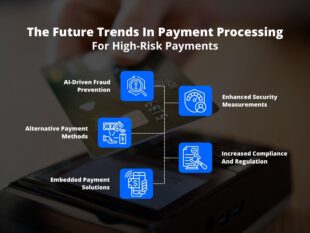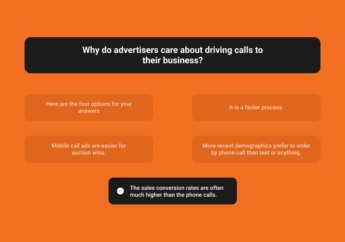Demand Generation Marketing Ideas for New Businesses
by Abdul Aziz Mondal Business Published on: 04 October 2021 Last Updated on: 20 May 2025

Marketing their business can make it difficult for companies to start fresh in the digital landscape. Why?
It all boils down to making your audience care about your product and services.
However, it’s easier said than done!
It is not easy to shift a customer’s perspective and convince them that your product or service can solve their problem. It is like finding a needle in a haystack.
To create awareness about your services and generate customer interest in your offerings, the company’s focus is on-demand generation.
Demand generation is a marketing powerhouse and antidote to your problem of generating qualified leads.
However, when thinking about demand generation marketing, it’s easy to get confused with another interesting marketing term, Lead Generation.
Before exploring ideas for generating demand for a business, let’s understand demand generation vs. lead generation.
Let’s dive in!
Difference between demand generation and lead generation
Demand generation is an involved process. The process focuses on increasing brand awareness, building an online presence, and building a solid brand reputation.
In contrast, lead generation aims to gain contact details of potential clients and capture leads. Think of the former as a step before your business starts generating leads.
Demand generation marketing identifies potential clients based on their initial interaction and action with a brand.
In this process, businesses nurture the leads and provide their sales team with a genuinely qualified lead. As a result, your company has a better conversion rate and, of course, more sales.
Demand generation marketing focuses more on quality leads and solving a customer’s problem, whereas lead generation is a volume game focusing primarily on providing a solution.
The latter is more about creating opportunities with people ready to purchase from your brand.
In short, lead generation is a result of demand generation.
Let’s explore some demand-generation strategies to incorporate into your marketing efforts.
5 Demand Generation Ideas for Fresh Businesses
To drive desirable results for your new business and ensure it thrives in this competitive digital landscape, focus on implementing these five demand-generation ideas.
1. Produce Valuable Content for Your Readers
Content is the king, queen, and everything in between, especially when creating demand for your products and services.
With hundreds of articles and blog posts on the same topic fighting to garner their audience’s attention, creating content that speaks to your customer’s pain points matters the most.
Inbound marketing tactics like content creation are at the heart of a successful demand-generation strategy.
So, to generate demand, start by educating your target audience on problems they have, then help them clearly define their problems, and lastly, provide them with a robust solution to their problem.
You’re generating demand by tying the high-level concepts of your product or service to the value your solutions bring to the table.
This is where we instill confidence and win customers’ trust. So, create proof point content like testimonials and case studies. Such content proves your services when you work for a company similar to the one you’re targeting.
Testimonials and case studies help you convince prospects who want to buy your products but still need to be more responsive about becoming long-term loyal customers.
Also, to drive organic traffic to your website, invest in quality blog content and see the search engine show the top search results in your favor.
Add other content forms like webinars, emails, newsletters, podcasts, social media posts, and landing pages. These will help align your demand generation strategy with your brand’s overall goals.
2. Set Up Ad Campaigns and Filter Lookalike Audience
How do you generate demand from customers who haven’t heard about your brand and its offering?
Simply use paid promotion to drive your target audience to your brand.
Paid ad campaigns on Google and social media platforms tend to deliver exceptional results for new businesses that do it right.
So, instead of manually searching for a target audience on Facebook or Google, use an intelligent targeting strategy. This strategy is called a similar audience on Google and a lookalike audience on Facebook.
This intelligent technique can help you build a larger audience by replicating your existing audience’s demographics, likes, dislikes, and preferences.
This new audience reflects and resembles users who have shown some interest in your services.
It’s an excellent demand-generation marketing tactic because you can generate demand in your target audience without paying an extra penny.
3. Implement a Lead-Scoring System
Demand generation is not only about enhancing the total number of leads for your brand; it’s more about improving the quality of those leads.
That’s why new businesses turn to lead scoring to determine whether your leads are quality leads that your sales team requires to close deals.
Implementing a lead scoring system in your marketing efforts is a great way to attract qualified leads.
This system generally assigns contacts or potential leads based on their job title, location, industry, size, and company. Lead scoring assigns points based on the actions users take
Based on their interaction with your brand, every lead scores a point. You can accomplish this by examining your brand’s actions at various touchpoints, such as visiting your website, attending events, downloading content, or clicking on your CTA.
This scoring can help you assess the individual’s role in an organization.
One thing that sets this demand generation idea apart is that it relies on your sales and marketing team’s benchmark, common metrics, and standards.
Furthermore, this information becomes critical for creating your service level agreement (SLA) that defines when your lead is ready for purchase and the best time for follow-up.
Brands planning to take their demand generation to another level should consider lead scoring an integral marketing tactic.
4. Improve Content Engagement
According to various research, successful marketers spend 20% of their time creating content and 80% of their time promoting and improving content engagement.
That’s why content syndication is an essential aspect of demand generation. It’s all about promoting your content to an audience interested in hearing from your brand.
Instead of a sales pitch focusing primarily on sales, content syndication is a softer sell.
Content syndication is not simply guest posting on someone’s website with one or two backlinks. It’s a paid opportunity to amplify your reach by distributing and publishing content through a reputable third party.
By leveraging the influence of high authority sites, you can distribute content to a newer audience you find difficult to reach.
Your content gets published as gated content, and you can collect qualified leads for your business.
With an average person consuming content for over 11 hours a day, content syndication is an excellent tactic to accelerate your demand generation.
It’s an excellent tactic for new and small businesses looking to make noise in a cluttered environment.
Interestingly, with content syndication, you increase the ROI of your content creation efforts and ensure it increases demand and leads for your products or services.
5. Develop a Strategy for Social Media
Social media provides an excellent opportunity for a brand to increase awareness. When your brand stays on the top of social media feeds, customers will remember your brand.
Building social media relationships will increase awareness and create more demand for your brand. Instead of capitalizing on the technical specifications of your product or services, relate your social media content with the stories your customers tell.
Urge your customers to share user-generated content and show your audience how easy it is to share their experiences. You can generate a viewer’s interest without hard-selling your product or service.
Before generating a social media strategy and user-generated content, find out which platform your target audience uses and the reason for using it. You may find half of your target audience on Facebook, while the other half may prefer LinkedIn over Twitter and Instagram.
Also, curate platform-specific content to win the trust of your audience. Consistently showing up on your customer’s news feed and delivering value will take your demand generation boat to the shore.
Wrapping up
These key demand-generation marketing tactics can help you rope in new customers and get your customers invested in your services.
Demand generation depends on how well your company shows up with content that a customer seeks. While demand generation may seem overwhelming, it requires much effort to reap the desired results.
While no strategy is the roof and guarantees a successful flight for your brand, these five demand-generation strategies can help you create demand when starting your business.
You may have to use more than one strategy to see effective results. However, don’t expect results the very next day of implementing them. Why?
Creating customer interest in your product and generating demand isn’t a one-day affair. It takes time to build a loyal audience and create engagement.
Which of these demand generation ideas are you planning to use?
Please share your thoughts with us!
Additional Reading:



































































































